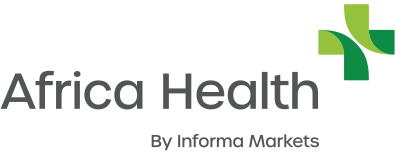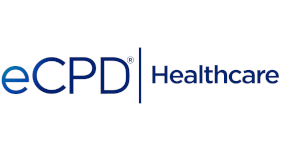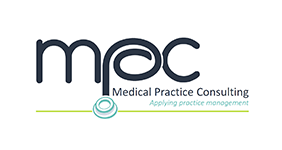Patient Engagement: A new approach for managing costs and increasing value
29.04.19
By Prof Morgan Chetty, Visiting Prof, Health Sciences, DUT, Chairman, IPAF, CEO KZNDHC, Durban, South Africa
The present healthcare system is not delivering value. In fact, costs are escalating at an unsustainable pace. This is an unrelenting debate at all health policy discussions.
The focus of healthcare is shifting away from the measurement of outputs and volumes of service delivery towards a focus of achieving “Value”
The concept of value has a strong economic focus as those who provide healthcare related services aim to deliver cost effective services to patients; there is also a focus on ensuring that the services delivered provides value to patients.
The costs have been broken down to focus on these components that contribute to the escalating costs: consumer price index, tariff increases; demand side factors (plus provider induced demand) supply side factors. All these add up to medical inflation.
The high healthcare costs have further been isolated to other related factors:
- The underlying costs related to an aging population and the increasing use of healthcare services by patients with chronic conditions.
- New advancements in technology that should decrease costs but in fact drive up costs. This is largely due to inappropriate use of technologies.
- Lack of personal responsibility for healthcare.
- Lack of transparent information and proper economic incentives to manage costs, quality and individual health.
- Consumers are shielded from the real costs of healthcare and lack strong economic incentives or knowledge to select the most appropriate treatment.
The recent debate focuses on the provider reimbursement methodology. It has been mainly a fee for service model that drives demand for more medical services rather than being paid for outcomes or better care coordination.
Also, the slow up take of technology and EHR has prejudiced “physicians who have lack of information and decision support tools to allow them to follow evidenced based clinical guidelines”.
So, in summary, many strategies have been implemented to stop the healthcare system from “haemorrhaging”. But at a closer look at the strategies in place, the focus has been on the physicians, health systems and hospitals.
Right choice of care
We need a paradigm shift from the usual methods employed to manage costs and quality.
High on the agenda and ignored for all this time is the role of the patient as a co-manager of limited resources and high costs. I want to introduce the role of the patient as an alternate strategy to manage costs, produce better outcomes and improve quality.
The emphasis is by engaging with patients, empowering the patients to participate directly in managing their own healthcare by shared decision making. They make the correct choice of care and become partners with the physicians in the caring process.
Patients interests and interests of the health system is not served if the patients receive care that is unnecessary, wasteful and harmful especially if they are unaware of this.
The chosen treatment modality may not be desired by the patients if they understood before care was delivered, the cost of care, the benefits and harm of the interventions. They need information and hard-core data to help them make the right choice of care.
It is important to reflect on the quote: “More is not always better in healthcare.” Patients benefit from decision aids. They benefit if the provider of care can spend the time explaining the pathology, the treatment modalities and the recovery rate.
They also need to understand upfront the success and failures of the current treatment modalities. Patients then engage being informed and participate in shared decision making. The result is a more appropriate choice, with better compliance and adherence to treatment regimes.
Their choices tend to be more in line with what is important to them. The Cochrane review in 2011, found that the use of decision aids produced a significant reduction in major elective surgeries, PSA screening and hormone replacement therapy.
Reportedly, the Lewin Group presented savings of US$3.8 billion over five years and US$9.2 billion over 10 years with the routine use of patient decision aids and shared decision making.
Work done by the Horizon Blue Cross Blue Shield (BCBS) programme in New Jersey in 2014, demonstrated that when members receive care from a doctor who participated in a patient centred programme, they scored higher on the quality care metrics at a cost that is 9 per cent lower than those members at a traditional doctors practice.
Robert A Marino, Chairman and CEO of Horizons BCBS, stated: “The promise of patient-centred care and value-based care to deliver better quality of care at lower costs, is no longer theoretical, it is a reality.”
The message is that there is “the need to innovate and transform healthcare to ensure patients receive more co-ordinated, better quality care at a lower cost”.
Patient centred care approach refers to an innovative approach where health insurance companies reward doctors/providers of care for meeting certain clinical quality, patient satisfaction and efficiency benchmarks.
Unlike the traditional practices based on the fee for services reimbursement strategy, patient centred practices are also financially rewarded to improve the patients care based upon National Clinical Guidelines and improve the patients experience with such services as extended hours and more active communication. The purpose is to motivate patients with more co-ordinated and personalised care.
In many of the successful programmes, a patient focused strategy includes:
- A care coordinator who provides additional patient support, information and outreach.
- Increased wellness and preventative care based on national clinical guidelines.
- Extra wellness support and education
- Appropriate communication strategies between doctors/care coordinators and patient
- Active coordination of patient care with specialists and other providers.
In many other PCC programmes, it is demonstrated that primary care visits increased because of the trust in family doctors, decreased unnecessary referrals to specialists, and decreased demand for laboratory and radiology requests. The compliance and adherence improved and there were better recorded outcomes.
The benefits of patient centred care can be measured, and it complements and gives a holistic picture of outcomes when combined with the traditional measures obtained from administrative data metrics.
The outcomes measured from administrative data sets measures the provider productivity and cost targets. It is driven by financial targets and adherence to standardised healthcare guidelines.
When one measures the benefits of patient reported outcomes and patient experience outcomes it measures whether the care delivered benefitted the patient and whether it makes a difference to their healthcare status. It is a measure of the patients’ experience, satisfaction and perception of care delivered.
It was as early as 2001 when the Institute of Medicine (IOM) in the U.S., presented its report “crossing the quality chasms”. The IOM presented an action plan for reinventing the health system to improve the nation’s health. One of the six components in achieving quality healthcare was identified as “Patient Centeredness”
A patient centred approach is a positive strategy for the future for managing limited resources and containing costs.
Prof Chetty will be sharing opening remarks on both days of the Healthcare Management Conference, will be part of the ‘Pharma Panel: Patient-centred vs cost-centred?’, and will be discussing ‘PROMS vs PREMS’ on May 28, at the Africa Health Exhibition and Congress.







